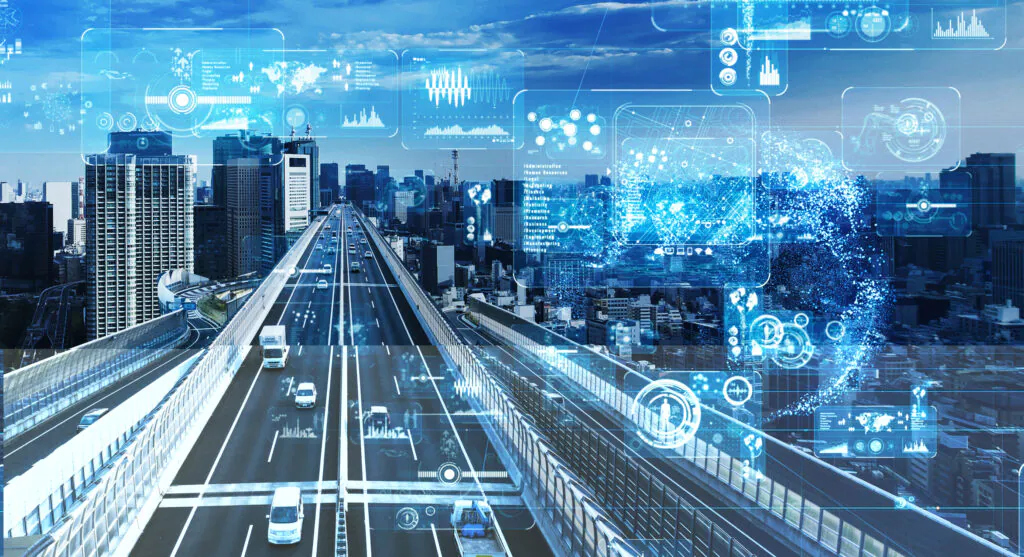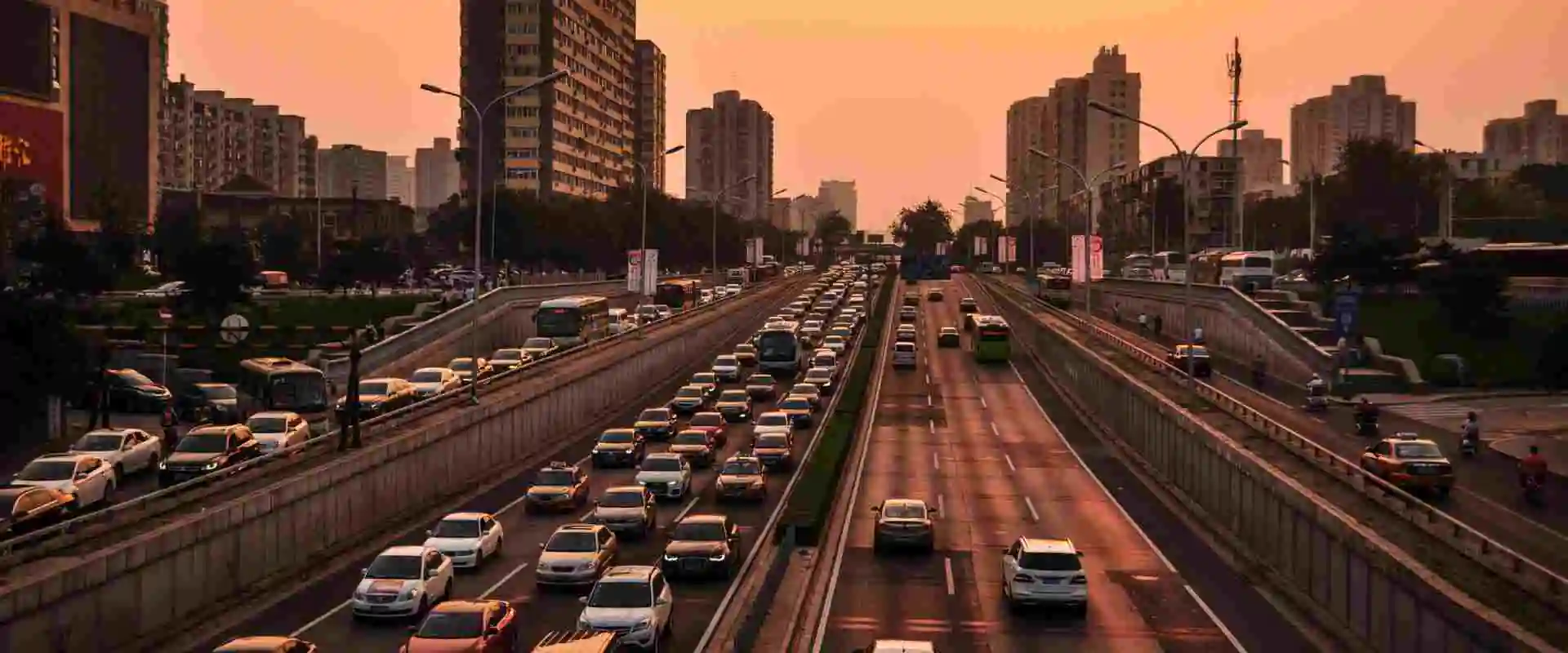Overview
The transportation industry is undergoing a transformative period driven by rapid technological advancements, shifting consumer expectations, and evolving regulatory landscapes. As the sector adapts to the pressures of sustainability, efficiency, and innovation, several key trends are emerging. These include the rise of electric and autonomous vehicles, the integration of smart infrastructure and IoT technologies, advancements in logistics and supply chain management, and a growing emphasis on reducing carbon footprints. Additionally, evolving consumer preferences for personalized and on-demand services are reshaping how transportation networks are designed and operated. Looking ahead, future trends are expected to include the proliferation of hyperloop and high-speed rail systems, the expansion of urban air mobility with drones and flying taxis, increased use of artificial intelligence for predictive maintenance and route optimization, and a continued focus on enhancing sustainability through alternative fuels and green technologies. Understanding these current and future trends is crucial for stakeholders aiming to navigate the evolving landscape of transportation effectively and capitalize on emerging opportunities.

Key Innovations Transforming Transportation
The transportation industry is being significantly transformed by several key innovations that enhance efficiency, safety, and sustainability. Recent advancements across various domains highlight how technology is shaping the future of transportation:
-
Electric Vehicles (EVs)EVs, like the Tesla Model S Plaid, are gaining popularity due to advancements in battery technology that enhance range and performance, offering a cleaner alternative to traditional vehicles
-
Autonomous VehiclesSelf-driving cars, such as those operated by Waymo in Phoenix, use technologies like LiDAR and AI to navigate without human input, aiming to improve safety and reduce congestion
-
Smart Infrastructure and IoTSmart infrastructure, such as Barcelona’s IoT-based parking system, uses real-time data to optimize traffic management and reduce congestion
-
Hyperloop TechnologyHyperloop aims to revolutionize high-speed travel with pods traveling in low-pressure tubes at over 700 mph. Virgin Hyperloop’s successful passenger test in 2020 highlights its potential
-
Urban Air Mobility (UAM)UAM focuses on integrating aerial vehicles like Volocopter's 2X flying taxis into urban areas, promising faster and more efficient transportation
-
Advanced Logistics and Supply Chain SolutionsAI and automation in logistics, exemplified by Amazon’s autonomous robots, enhance efficiency and reduce costs in warehousing and delivery operations
-
Sustainable Transportation SolutionsHydrogen fuel cell vehicles, like Toyota’s Mirai, offer zero-emission transportation by using hydrogen to produce electricity, addressing environmental concerns
-
AI-Driven Traffic ManagementAI systems, such as LA’s "Surge," optimize traffic flow by analyzing real-time data to adjust traffic signals and reduce delays
These innovations collectively represent a significant leap forward in how transportation systems are designed and operated, reflecting a broader trend towards smarter, more efficient, and environmentally friendly solutions.
Impact of Technology on Transportation
Technology is profoundly reshaping the transportation industry, bringing about significant changes in efficiency, safety, and environmental impact. Here’s a look at how various technological advancements are influencing the sector:
Enhanced Efficiency
- Automated vehicles: Autonomous vehicles and smart traffic management systems streamline operations, reduce human error, and optimize traffic flow, leading to more efficient and active transportation networks
- AI and data analytics: AI-driven tools analyze traffic patterns, predict maintenance needs, and optimize routes, improving logistics and reducing operational costs
Increased Safety
- Advanced driver assistance systems (ADAS): Technologies such as adaptive cruise control, lane-keeping assist, and automated emergency braking enhance vehicle safety and reduce accidents
- Real-time monitoring: IoT sensors and connected infrastructure provide real-time data on road conditions and vehicle performance, enabling proactive safety measures
Sustainability
- Electric and hydrogen vehicles: EVs and hydrogen fuel cell vehicles contribute to reducing carbon emissions and dependence on fossil fuels, promoting a greener transportation sector
- Smart infrastructure: Energy-efficient traffic lights and sustainable building practices in transportation infrastructure reduce the environmental impact of urban transportation systems, particularly in response to growing urbanization
Cost Reduction
- Automation and robotics: Automation in logistics and warehousing reduces labor costs and increases operational efficiency. For example, autonomous robots in fulfillment centers streamline inventory management
- Predictive maintenance: AI and IoT technologies enable predictive maintenance, reducing the cost of unexpected breakdowns and extending the lifespan of vehicles and infrastructure
Improved Customer Experience
- On-demand services: Ride-sharing platforms and autonomous taxis offer flexible, on-demand transportation options, enhancing convenience and accessibility for consumers
- Personalization: Technology enables personalized travel experiences, such as customized route planning and real-time updates on transit options
Urban Planning and Development
- Smart cities: Technology facilitates the development of smart cities with integrated transportation systems that improve urban mobility and reduce congestion
- Advanced analytics: Data-driven insights support better urban planning and infrastructure development, leading to more efficient transportation networks
Innovation in Transportation Modes
- Hyperloop and high-speed rail: Innovations like the Hyperloop promise revolutionary changes in long-distance travel with extremely high speeds and efficiency
- Urban air mobility: Emerging aerial transportation solutions, such as flying taxis, offer new possibilities for overcoming urban congestion and providing rapid transit options
Enhanced Logistics and Supply Chains
- Blockchain and IoT: Blockchain technology and IoT improve transparency and traceability in supply chains, enhancing logistics efficiency and reducing fraud
- Automated warehousing: Technologies like automated sorting systems and autonomous drones optimize warehousing operations, speeding up delivery times and reducing costs
Overall, technology is driving transformative changes in the transportation industry, leading to more efficient, safer, and sustainable transportation solutions.
Future Transportation Models
Future transportation models are evolving rapidly, influenced by technological advancements, sustainability goals, and changing societal needs. Here are some key trends and models shaping the future of transportation:
These models are not only transforming how we travel but also contributing to broader goals such as reducing emissions, improving efficiency, and enhancing overall quality of life.
Preparing for the Future of Transportation
Preparing for the future of transportation involves strategic planning, investment, and adaptation to new technologies and trends. Here’s a guide on how to effectively prepare:
Invest in Emerging Technologies
- Electric and autonomous vehicles: Explore partnerships with companies developing EVs and autonomous technologies. Consider incorporating these vehicles into your fleet or operations
- Urban air mobility: Stay informed about advancements in eVTOL and drone technologies. Evaluate potential applications for urban air mobility in logistics or passenger transport
Enhance Infrastructure
- Charging and refueling stations: Invest in EV charging infrastructure or hydrogen refueling stations. Ensure compatibility with future vehicle models and technologies
- Smart infrastructure: Upgrade traffic management systems to incorporate smart technologies that can improve traffic flow and safety. Implement IoT sensors and data analytics to enhance operational efficiency
Adopt Sustainability Practices
- Green transportation: Explore alternative fuels and sustainable transportation options. Implement practices to reduce the carbon footprint of your operations, such as optimizing routes and investing in fuel-efficient vehicles
- Energy efficiency: Invest in energy-efficient technologies and practices. Implement energy management systems to monitor and reduce energy consumption in transportation operations
Focus on MaaS
- Integration: Develop or partner with platforms that offer MaaS solutions. Ensure your services are compatible with digital platforms that integrate various transportation options
- Customer experience: Enhance the user experience by providing seamless and convenient transportation options. Utilize data to personalize and improve service offerings
Stay Informed and Adapt
- Continuous learning: Keep abreast of trends and technological advancements in transportation. Attend industry conferences, webinars, and workshops to stay informed
- Flexibility: Be prepared to adapt to new technologies and regulatory changes. Develop strategies to quickly integrate emerging trends into your operations
Collaborate and Innovate
- Partnerships: Form alliances with tech companies, startups, and research institutions to drive innovation and access new technologies
- R&D: Invest in R&D to explore new transportation solutions and improve existing technologies. Encourage a culture of innovation within your organization
Regulatory Compliance
- Stay updated: Monitor changes in transportation regulations and standards. Ensure compliance with environmental regulations, safety standards, and data privacy laws
- Advocacy: Participate in industry discussions and advocate for policies that support sustainable and innovative transportation solutions
Public and Stakeholder Engagement
- Education and outreach: Educate stakeholders, including customers and employees, about new transportation technologies and their benefits. Engage with the public to build support for innovative transportation solutions
- Feedback: Collect and act on feedback from users to improve services and adapt to changing needs
By proactively addressing these areas, you can position yourself or your organization to thrive in the evolving transportation landscape.
Real-world Examples: Adoption of New Trends by Transportation Companies
Here are some real-world examples of transportation companies adopting new trends:
| Company | Trend/Technology Adopted | Adoption of Strategy | Impact/Outcome |
| Tesla | EVs | Development and mass production of EVs, including Model 3, S, X, and Y | Leading global EV sales, and a significant reduction in carbon emissions |
| Waymo (Alphabet Inc.) | Autonomous vehicles | Testing and deployment of autonomous taxis in select US cities | Successful launch of autonomous ride-hailing services |
| Uber | Shared mobility & autonomous vehicles | Ride-sharing platform with investment in autonomous vehicle research | Expanded services with the potential to reduce urban traffic congestion |
| Volocopter | Urban air mobility (eVTOL) | Development and testing of electric air taxis for urban environments | Successful test flights, aiming for commercial launch |
| BP | Charging infrastructure for EVs | Investment in EV charging networks, including partnerships with ChargePoint | Expanded global EV charging infrastructure |
| Virgin Hyperloop | Hyperloop | Development of high-speed transportation using vacuum tubes | Successful test runs, aiming for commercial operations by 2030 |
| Daimler Trucks | Hydrogen fuel cell vehicles | Development of hydrogen-powered trucks, including the GenH2 Truck | Progress towards zero-emission heavy-duty transportation |
| Siemens Mobility | Smart infrastructure | Development of intelligent traffic systems and digital rail solutions | Improved traffic flow and reduced congestion in urban areas |
| Lyft | MaaS | Integration of various transportation options into a single platform | Increased user engagement and service efficiency |
| Amazon | Delivery drones and autonomous vehicles | Testing autonomous delivery vehicles (Scout) and drones (Prime Air) | Enhanced last-mile delivery efficiency, reduced delivery times |
Conclusion
The transportation industry is at the cusp of a revolutionary transformation, driven by rapid technological advancements, sustainability imperatives, and evolving consumer demands. As electric vehicles, autonomous systems, and smart infrastructure become increasingly integrated into everyday life, industry is poised to become more efficient, safer, and environmentally friendly. Companies that invest in these emerging technologies and adapt to new business models, such as MaaS and urban air mobility, are positioning themselves to thrive in this dynamic landscape. Furthermore, the ongoing focus on reducing carbon footprints and enhancing urban mobility reflects a broader societal shift towards sustainable development. By embracing these trends and staying agile in response to regulatory changes and market shifts, stakeholders in the transportation sector can not only meet current challenges but also capitalize on the vast opportunities that lie ahead.


